(Paris, 1858 – Lausanne, 1945)
Portrait of Richard-Gabriel MORRIS (1837-1914), the artist’s father-in-law
Oil on canvas
Signed lower right
146 x 105 cm
Exhibition: Paris Salon of 1880 under number 1726
Son of a couple from Alsace, Ferdinand Gueldry was born on May 21, 1858, in Paris. Precocious in his art and encouraged in this direction by his parents, he entered the École des Beaux-Arts in Paris in 1874. He stayed there for four years under the teachings of Jean-Léon Gérôme. At the very beginning of his career, Gueldry mainly painted portraits. In this respect, our large painting presented here was produced in this early period of the artist's life with a way of painting still under the perceptible influence of the master Gérôme. Satisfied with his work, Gueldry exhibited this portrait of his father-in-law in an unconventional pose, not to say modern at the time, at the 1880 Salon. Théodore Véron, in his usual harsh critique of the Salon, described it as a "fairly good portrait". From the early 1980s, Gueldry devoted a good part of his art to depicting his favorite sport, rowing, which would become a recurring theme of inspiration in his work. In parallel, he would develop a naturalist orientation in his painting by turning towards a very realistic representation of the second industrial revolution taking place before his eyes. He would demonstrate this in his own way through large representations of factory and workshop interiors as well as scenes of working-class life that were often quite crude. In 1895, he married one of the daughters of Richard-Gabriel Morris, the son of a printer and promoter in Paris of the eponymous columns, of which we have here a striking, relaxed portrait. On the critical level, from the beginning of the 1880s, Bertall, Étienne Carjat and Gil Blas were enthusiastic about his innate talent. In 1902, Joris-Karl Huysmans wrote: “Mr. Gueldry is one of the rare painters who have tried to free himself from his school memories and go straight to nature.” Present at the Salon until 1933, Gueldry was awarded a third-class medal in 1885, and a silver medal at the Universal Exhibition of 1889. In 1908, he was named a knight of the Legion of Honor under the patronage of Édouard Detaille. The artist died on February 17, 1945, in Lausanne.
Museums: Reims, Nogent-sur-Marne, Paris (Mus. Carnavalet, Hôtel des Invalides), Amiens…
Richard-Gabriel Morris was born on November 29, 1837, in Paris. Son of the Parisian printer Richard James Placide Morris, Richard-Gabriel took up service with his father in the early 1860s. Inspired by the poster columns developed in Berlin and Vienna by Ernst Litfass in the late 1850s, Richard-Gabriel suggested to Baron Haussmann in 1868 that he equip Paris with this type of street furniture, which would later become the famous Morris columns that still exist today. The concessions granted by the city of Paris proved very lucrative for Richard-Gabriel: the responsibility for maintaining the advertising columns, manufacturing and installing the posters fell to Morris, who, for his part, invoiced the advertisers. These concessions would grow throughout his life to reach the number of 225 columns in Paris in the 1910s and would make him the first major advertising printer of his time. On a personal level, Morris was made an officer of Public Instruction and held the position of vice-president of the Seine Rescue Society. It was on this occasion that he was able to meet Gueldry, who was then very involved in his water sports hobby: rowing. Furthermore, we can see in our painting, placed on the table, a sky-blue book entitled l’Oasis by Ferdinand Dugué (1816-1913). The book is not there by chance. Richard-Gabriel married Berthe Dugué, daughter of the playwright, on January 9, 1866. It was from this union that Ferdinand Gueldry's future wife, Jeanne, was born. Richard-Gabriel Morris died in Paris on February 18, 1914.









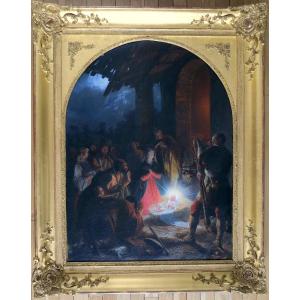


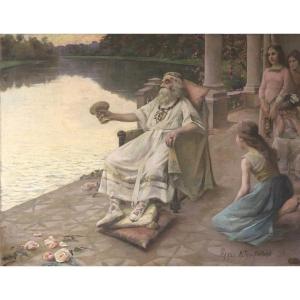

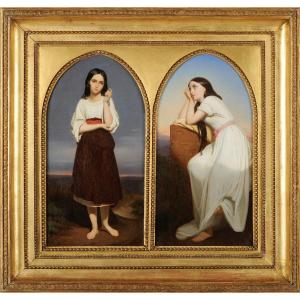
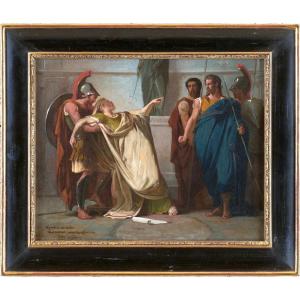
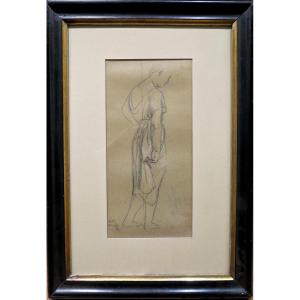
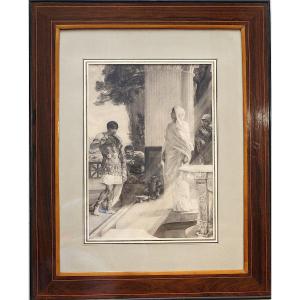
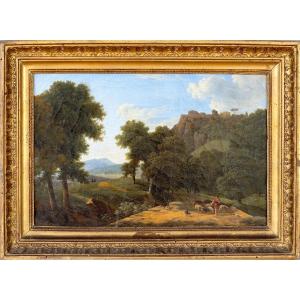



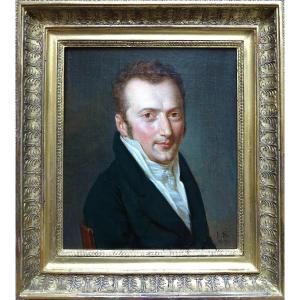

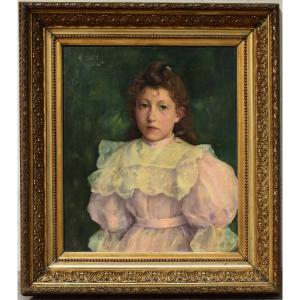
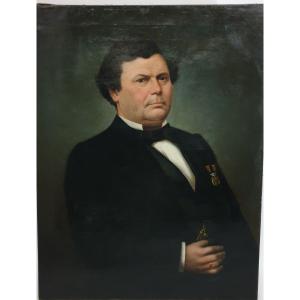
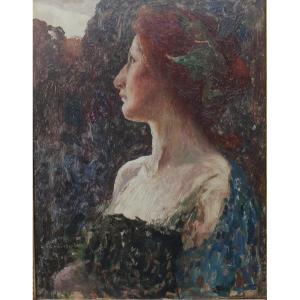
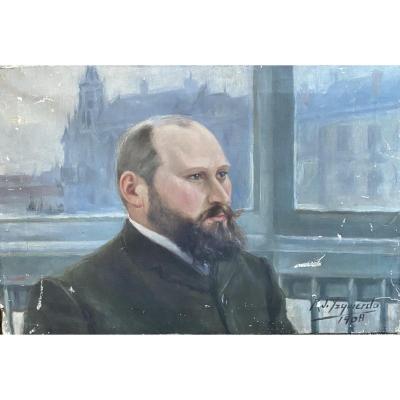



 Le Magazine de PROANTIC
Le Magazine de PROANTIC TRÉSORS Magazine
TRÉSORS Magazine Rivista Artiquariato
Rivista Artiquariato